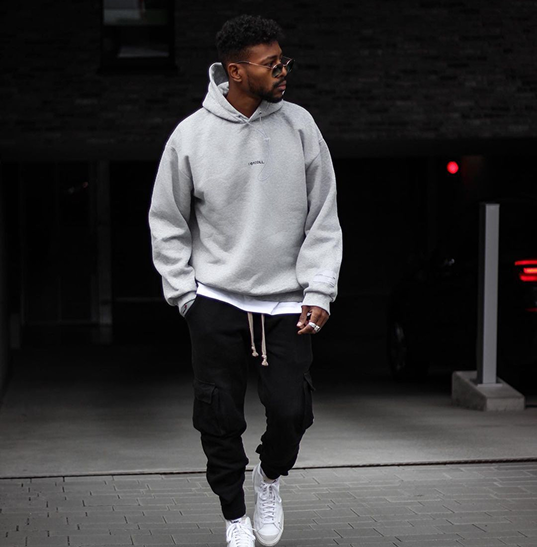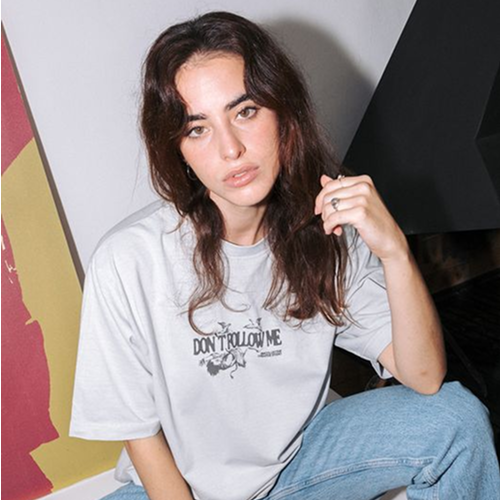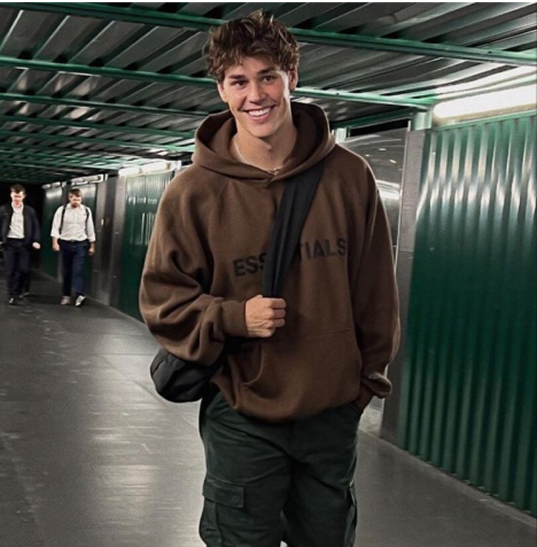(~4000 words)
Introduction: When Comfort Defied the Seasons
There used to be a simple rule in fashion: hoodies are for the cold.
When summer came, they disappeared into closets, making room for tank tops and tees.
But that rule has been quietly rewritten.
Walk down a street in Los Angeles, Seoul, or Paris in mid-July, and you’ll spot people rocking oversized hoodies with shorts, slides, or sneakers. Sweatshirts in pastel tones, cropped silhouettes, and lightweight fabrics now dominate even in tropical climates.
The hoodie has evolved — from a piece of winter armor to a symbol of year-round comfort, style identity, and emotional safety.
This is the story of how the hoodie escaped seasonal boundaries and became the global uniform of modern ease.
- The Hoodie’s Original Purpose
Before the hoodie became a fashion icon, it was a tool — a functional garment born in the 1930s for workers in freezing warehouses.
Champion Products (now Champion) introduced it to keep laborers warm.
Then came athletes, soldiers, and finally the streets.
By the 1970s, the hoodie was no longer just about protection — it was about persona.
It carried attitude, anonymity, and rebellion. From Rocky Balboa’s gray training hoodies to the hip-hop icons of the Bronx, the garment became cultural armor.
But for decades, its environment remained fixed: cold air, dim gyms, autumn leaves.
Until something changed — the world itself began to blur the lines between comfort, fashion, and climate.
- The Rise of All-Season Streetwear
Fashion has a funny way of turning practicality on its head.
What began as a necessity became a language — and the hoodie became one of its most powerful dialects.
In the late 2010s, the rise of streetwear luxury (thanks to brands like Fear of God, Off-White, and Yeezy) gave the hoodie a new role: emotional expression.
These pieces weren’t made for utility. They were made for vibe — the drape, the silhouette, the aura.
Soon, people realized that comfort wasn’t seasonal. Why reserve your coziest garment for winter when you could adapt it for all occasions?
Designers started experimenting:
Lightweight French terry instead of fleece.
Cropped or sleeveless hoodies.
Loose, breathable weaves.
Monochrome tones that reflect light instead of absorbing heat.
The hoodie had become a 12-month essential.
- The Psychology of Comfort
To understand the hoodie’s summer takeover, you must understand its psychology.
The hoodie represents something primal: protection and belonging.
It’s the wearable equivalent of a personal cocoon — a soft barrier between you and the world.
In the chaos of digital life, people crave control and comfort. The hoodie offers both.
It covers without restricting. It conceals without isolating.
When people wear hoodies in the heat, they aren’t defying logic — they’re expressing emotion.
The garment says, “I want to feel safe, but I still want to look good.”
In a world where stress and exposure are constant, the hoodie has become the modern security blanket — and fashion’s most honest form of self-care.
- Celebrity Influence and Cultural Momentum
Once the celebrities got on board, the hoodie’s new identity exploded.
From Billie Eilish’s oversized silhouettes to Justin Bieber’s casual off-duty looks and Kanye West’s neutral-toned YEEZY sweats — the hoodie became a cultural phenomenon that transcended seasons.
The message was clear:
“Comfort is style.”
Hoodies appeared on runways at Balenciaga, Vetements, and Fear of God — paired with tailored trousers or layered under blazers. What was once gym wear now walked the catwalk.
Street icons, skaters, and pop stars began wearing hoodies to festivals, beaches, even tropical holidays. The visual contrast — a heavy-looking garment in bright daylight — became part of the aesthetic.
It wasn’t weather-appropriate, but it was culturally perfect.
- Fabric Innovation: The Cool Comfort Revolution
To sustain this trend, brands had to solve one problem: heat.
Enter fabric innovation.
The new era of hoodies is defined not by fleece, but by airflow.
Modern materials include:
Loopback cotton: lighter, breathable, and moisture-wicking.
French terry blends: soft on skin but airy enough for summer days.
Tencel and bamboo fabrics: naturally cooling and sustainable.
Micro-modal: smooth, draping beautifully while letting skin breathe.
The summer hoodie no longer traps heat — it balances it.
Many brands now craft “climate-flex” hoodies, adapting to body temperature. As techwear merges with streetwear, your hoodie can literally breathe with you.
- Styling the Summer Hoodie
The key to pulling off a hoodie in hot weather lies in styling. It’s all about balance — volume, exposure, and tone.
Here’s how the look evolved:
Shorts + Oversized Hoodie: the streetwear classic. Loose proportions create airflow while maintaining the visual weight of the top.
Cropped Hoodie + Cargo Pants: perfect for layering without overheating.
Light Hoodie + Denim Shorts + Slides: effortless, easy, coastal energy.
Unzipped Hoodie + Tank Top: a modern callback to 90s layering.
Pastel Hoodie + Neutral Bottoms: captures summer tones while keeping it soft.
The goal isn’t warmth — it’s vibe.
The hoodie isn’t worn despite the heat — it’s worn with it, as part of a balanced fit that expresses relaxation and intention.
- The Emotional Uniform of Gen Z
No generation has embraced the all-season hoodie like Gen Z.
For them, it’s more than a garment — it’s identity armor in a volatile world.
Gen Z’s fashion values are grounded in comfort, inclusivity, and mood expression. The hoodie fits all three. It’s genderless, size-fluid, and instantly familiar.
Unlike previous generations, Gen Z doesn’t dress to impress; they dress to feel.
A hoodie in 35°C heat doesn’t signal ignorance — it signals individual rhythm.
Their attitude:
“I wear what feels like me. Temperature is secondary.”
This emotional dressing — guided by authenticity, not weather — has made the hoodie the single most democratic piece in modern fashion.
- From Streetwear to Softwear
There’s a new word floating around fashion circles: softwear.
It describes the merging of emotional comfort and digital-era aesthetics — clothes that feel like home, whether you’re online or outside.
The hoodie is softwear’s crown jewel.
Think of it as the intersection between streetwear and self-care.
It’s the garment that allows you to switch between identities: from student to creator, from homebody to traveler.
Softwear brands now design hoodies that transition seamlessly from lounge to lifestyle:
Minimal seams and ergonomic fits.
Temperature-neutral fabrics.
Muted, earthy palettes for peace and grounding.
The hoodie has become the emotional bridge between hustle and rest.
- Sustainability and Slow Comfort
As fashion begins to slow down, the hoodie fits perfectly into the new sustainability narrative.
A hoodie is designed for longevity. It’s not bound to trends or seasons — it’s timeless.
Brands like Pangaia, Asket, and Colorful Standard focus on organic cotton, recycled fibers, and biodegradable dyes.
The result is not just a product, but a promise: fewer purchases, more value.
The modern hoodie isn’t fast fashion — it’s slow comfort.
It asks: what if fashion could make you feel good and do good at the same time?
- The Hoodie as Cultural Language
The hoodie has always been more than fabric — it’s communication.
In the early 2000s, it represented rebellion and anonymity. In the 2010s, it symbolized creative identity.
Now, in the 2020s, it stands for emotional intelligence.
The way you wear your hoodie says something:
Pulled over the head — introspection.
Unzipped — openness.
Oversized — confidence through comfort.
Cropped — redefinition of power.
In a world where fashion is language, the hoodie is a universal dialect.
Everyone owns one. Everyone understands it. But everyone wears it differently.
- The Hoodie in Global Contexts
From Tokyo to Lagos, from Miami to Copenhagen, hoodies have taken on local identities.
In Japan, minimalist hoodies in monochrome tones complement the country’s love of structure and restraint.
In the U.S., oversized hoodies carry hip-hop heritage and collegiate nostalgia.
In Scandinavia, neutral-toned organic hoodies express eco-conscious minimalism.
In Africa, bold-color hoodies reflect the region’s creative explosion in youth culture.
No matter the temperature, the hoodie finds a home — adapting like water to culture and climate.
It’s no longer a Western export; it’s a global comfort code.
- Future Trends: Cooling Tech and Adaptive Aesthetics
The next chapter of hoodie evolution will merge technology with biology.
Imagine:
Hoodies with built-in cooling fibers that react to sweat and body heat.
UV-resistant textiles that protect without insulating.
Nano-ventilation panels invisible to the eye but responsive to motion.
AI-designed hoodies tailored to your unique body temperature rhythm.
The hoodie of the future won’t fight the heat — it’ll cooperate with it.
As the planet warms and lifestyles accelerate, adaptive clothing will define the next era of streetwear.
And at the heart of it? Still the same garment: soft, familiar, hooded — human.



